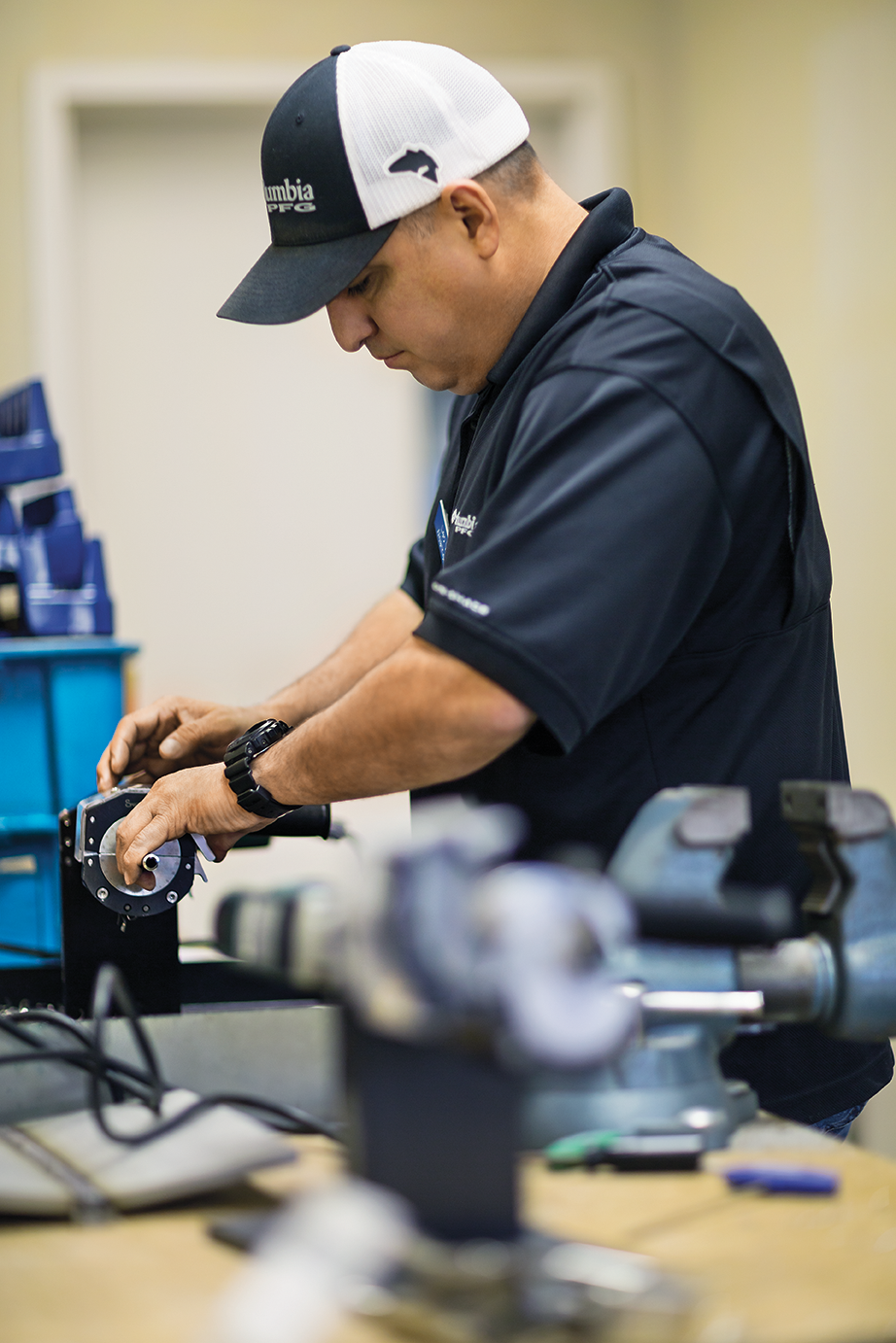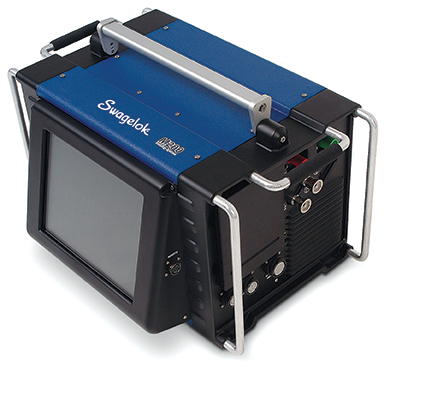Share this
Orbital Tube Welding for High Pressure Instrumentation, Service Systems
by Jason Burns on 11/15/22 9:00 AM

Instrumentation systems in refineries undertake the challenges of facilitating fluid flow, pressure measurement, and temperature regulation. High-pressure tubing is at the core of fluid systems, providing integral support for the system’s smooth operation. For safe and efficient operation, the tubing system needs to be robust and precise to handle the high stress, high temperature, and corrosive behavior imposed by the highly-pressurized, chemically reactive fluids being processed.
Robustness can be ensured in tubes when orbital welding is used instead of traditional manual welding. Orbital tube welding can counter the inefficiencies and inconsistencies—often present in manual welds—to fabricate a tube that provides strength and integrity.
Welded Tube Assembly in Highly Pressurized System
Highly pressurized fluids exert more stress on the instrumentation system, making them excessively prone to leakage and failure. Tubes are used instead of pipes to minimize the potential chances of defects. Tubes also offer strength, durability, and smoothness, which means the applied pressure during the flow doesn’t go through any drastic deviation. Instead, less friction facilitates increased speed. One way to ensure this lack of drag and speed throughout the fluid system is by welding the tubes.
Tubing weldment generally adheres to high precision and tight tolerance requirements. These requirements can be met at low cost and high speed, given the right welding technique is used. Orbital welding can facilitate the precision control required to fabricate reliable instrumentation welds that can meet ASME’s Boiler and Pressure Vessel Code (BPVC) Section IX weld qualifications. Furthermore, orbital welding is clean, consistent, and repeatable, offering uniformity in results.
Let's explore the differences further.
Orbital Welding Tube Vs. Manual Tube Welding
|
Orbital Tube Welding |
Manual Tube Welding |
|
When orbital welding, the confined and controlled flow of shielding gas ensures minimal consumption of gas for clean results. |
When welding tubes manually, a wide area has to be enveloped in gas to achieve the desired cleanliness. This requires excess shielding gas. |
|
The process is automated; weld parameters can be set for automatic welding while the operator takes on the monitoring role. |
The process requires qualified welders who are knowledgeable about strict tube welding requirements and are highly skilled in controlling the torch movement for precisely laying the weld beads. |
|
The controlled system can facilitate speed, voltage, and amperage adjustment to attain the necessary temperature required at weld point. Additionally, the orbital welding machine can produce this result repeatedly and continuously to achieve higher productivity. |
Due to human error, it is difficult to have perfect control over the travel speed and heat input. This creates inconsistencies in the tubing weldments resulting in more waste and less productivity. |
|
The process is suitable to keep welders safe from toxic fumes. |
Welders may develop health issues due to continuous exposure to the weld fumes. |
Orbital Welding Training for Tube Welding in High-Pressure Instrumentation System
Despite the differences, both orbital and manual welding require skilled welders. While manual welding may require a more hands-on approach, the orbital tube welding process still requires welders to operate the system, make decisions on material selection, optimize weld parameters, and monitor the process. For high-pressure instrumentation systems, the preparation, standards and weld techniques are even more demanding. To enhance this knowledge pool and better prepare the welding professionals for welding such highly demanding instrumentation systems, Swagelok offers a five-day orbital welding training program. This hands-on training program covers:
- Tube preparation and welding techniques
- Automatic GTAW (Gas Tungsten Arc Welding) and the basic principles
- Material selection and safety
- Shielding and purging gas
- Swagelok welding system (weld heads and power supplies) and their operation
- Industry standards including ASME Section IX and SEMI F78 practices
Our Solution for High-Quality Orbital Tube Welding
 Swagelok offers a wide range of weld heads and power supplies that can support orbital tube welding for high-pressure instrumentations at your refinery. It is important to note that the welding machines repeatedly produce the same result as per the set weld parameters, regardless of the accuracy of the input. With the M200 power supply, you can easily optimize your welding parameters to match your weld procedure specifications.
Swagelok offers a wide range of weld heads and power supplies that can support orbital tube welding for high-pressure instrumentations at your refinery. It is important to note that the welding machines repeatedly produce the same result as per the set weld parameters, regardless of the accuracy of the input. With the M200 power supply, you can easily optimize your welding parameters to match your weld procedure specifications.
With an intensive training program from highly qualified instructors and robust welding solutions from Swagelok, orbital tube welding for your high-pressure instrumentation system is sure to be productive and cost-effective.
To find out more about how Swagelok Northern California can support the high-quality orbital tube welding at your facility, contact our team today by calling 510-933-6200.
 About Jason Burns| Technical Services Manager
About Jason Burns| Technical Services Manager
Known to customers and Swagelok Northern California associates as the Swagelok Answer Man. Jason spends his work days answering customers' technical questions about Swagelok products and tools and training customers how to install and use them.
Share this
- Archive (465)
- Assembly Services (207)
- About (100)
- Seal Support Systems (96)
- Best Practices (88)
- Training Services (74)
- Fittings (51)
- Semiconductor Applications (49)
- Hoses and Flexible Tubing (47)
- Regulators (44)
- Tubing (42)
- Grab Sampling Systems (32)
- Sampling Systems (32)
- Gas Systems (30)
- Services (30)
- Downloads (29)
- Valves (24)
- Application Support (18)
- Orbital Welding (17)
- Case Studies (13)
- Steam Systems (13)
- Frequently Asked Questions (12)
- Tools (12)
- Measurement Devices (7)
- Subsystems (6)
- Thermal Management (6)
- September 2023 (1)
- August 2023 (2)
- June 2023 (1)
- March 2023 (3)
- February 2023 (3)
- January 2023 (4)
- December 2022 (4)
- November 2022 (4)
- October 2022 (4)
- September 2022 (1)
- August 2022 (3)
- July 2022 (2)
- June 2022 (4)
- May 2022 (1)
- April 2022 (2)
- March 2022 (1)
- February 2022 (2)
- January 2022 (3)
- December 2021 (1)
- November 2021 (6)
- October 2021 (6)
- September 2021 (8)
- August 2021 (4)
- July 2021 (3)
- June 2021 (6)
- May 2021 (6)
- April 2021 (7)
- March 2021 (5)
- February 2021 (4)
- January 2021 (6)
- December 2020 (5)
- November 2020 (6)
- October 2020 (6)
- September 2020 (8)
- August 2020 (7)
- July 2020 (8)
- June 2020 (8)
- May 2020 (6)
- April 2020 (9)
- March 2020 (7)
- February 2020 (10)
- January 2020 (21)
- December 2019 (23)
- November 2019 (21)
- October 2019 (22)
- September 2019 (21)
- August 2019 (22)
- July 2019 (23)
- June 2019 (20)
- May 2019 (23)
- April 2019 (22)
- March 2019 (21)
- February 2019 (20)
- January 2019 (21)
- December 2018 (14)
- November 2018 (19)
- October 2018 (23)
- September 2018 (17)
- August 2018 (29)
- July 2018 (11)
- June 2018 (6)
- May 2018 (5)
- April 2018 (4)
- March 2018 (5)
- February 2018 (3)
- January 2018 (3)
- December 2017 (2)
- November 2017 (4)
- October 2017 (3)
- September 2017 (2)
- August 2017 (6)
- July 2017 (4)
- June 2017 (4)
- May 2017 (4)
- April 2017 (3)
- March 2017 (4)
- February 2017 (3)
- January 2017 (3)
- December 2016 (3)
- November 2016 (3)
- October 2016 (3)
- September 2016 (5)
- August 2016 (5)
- July 2016 (4)
- June 2016 (5)
- May 2016 (3)
- April 2016 (4)
- March 2016 (5)
- February 2016 (11)
- January 2016 (1)
- December 2015 (3)
- November 2015 (4)
- October 2015 (3)
- September 2015 (4)
- August 2015 (4)
- July 2015 (8)
- June 2015 (5)
- May 2015 (3)
- April 2015 (4)
- March 2015 (4)
- February 2015 (3)
- January 2015 (4)
- December 2014 (2)
- November 2014 (3)
- October 2014 (4)
- September 2014 (4)
- August 2014 (4)
- July 2014 (5)
- June 2014 (4)
- May 2014 (4)
- April 2014 (5)
- March 2014 (4)
- February 2014 (3)
- January 2014 (4)
- December 2013 (5)
- November 2013 (3)
- October 2013 (4)
- September 2013 (3)
- August 2013 (5)
- July 2013 (5)
- June 2013 (5)
- May 2013 (3)
- April 2013 (6)
- March 2013 (4)
- February 2013 (4)
- January 2013 (8)
- December 2012 (4)
- November 2012 (6)
- October 2012 (6)
- September 2012 (4)
- August 2012 (4)
- July 2012 (4)
- June 2012 (4)

.webp?width=210&height=70&name=StickyLogo%20(5).webp)